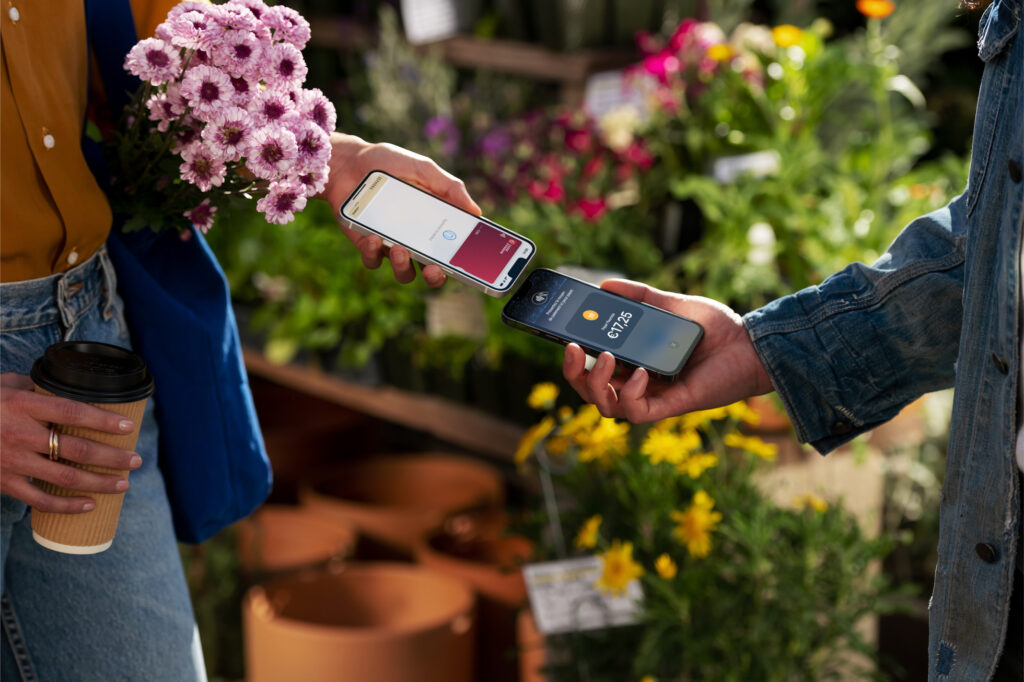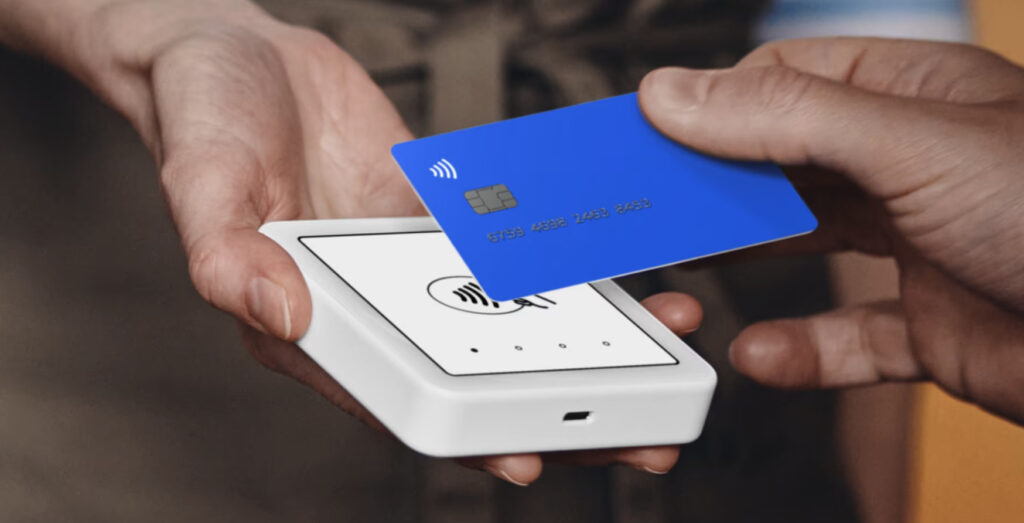From November 14, Apple, Sézane, Dior, Sephora and Dyson stores, among others, are starting to replace their old electronic payment terminals with iPhones, which accept any contactless card. “Tap to Pay” technology, as Apple calls it, could also be a revolution for small merchants.
In France, Apple Pay is undoubtedly the best-known mobile payment technology. Compatible with 98% of the country’s bank cards, Apple Pay allows anyone to pay with their iPhone rather than with their card, by bringing them closer to a TPE (electronic payment terminal). Seven years after the launch of Apple Pay, Apple has succeeded and made the iPhone a universal payment solution in France.
From November 14, 2023, Apple is going after merchants. The Californian brand aims to replace the payment terminals that we see everywhere with simple iPhones, thanks to a service called “Tap to Pay”. It allows an iPhone to accept contactless payments, in the same way as a TPE, whether it comes from a smartphone or a real card. The potential of Tap to Pay technology is colossal in a country where the majority of businesses are small businesses, for whom renting a VSE is often very expensive.
How do VSEs work today?
Today, to have an electronic payment terminal, a merchant has several options documented on the website of the Ministry of the Economy.
In most cases, they must subscribe to an offer with a payment provider. It may be a bank (BPCE, BNP Paribas, Crédit Agricole, etc.) or a financial company (SumUp or Stripe among the best known). The most common model is that of a monthly subscription, with an additional commission charged on each transaction. Companies like SumUp and Stripe have shaken up the market with low-cost portable terminals that connect via Bluetooth, allowing them to undercut the “big” TPEs, which are very expensive.

Why do you have to go through a payment provider? Because the latter has the obligation to verify the activity of his client to prevent fraud. Security for customers, but a constraint for merchants, who sometimes refuse the bank card to reduce their costs.
How does Tap to Pay work?
With Tap to Pay, Apple does not become a payment provider. The brand’s approach is not to sell its technology directly to merchants, but to offer it to existing providers.
To pay less, a café can, for example, decide to take out an offer with only Tap to Pay from SumUp or Revolut. This allows him, from the SumUp or Revolut application, to collect contactless payments without dedicated payment equipment. All he has to do is enter the amount and hand his iPhone to his customer, who can swipe their own smartphone or card on the screen. The merchant’s rental costs therefore disappear (or are greatly reduced), since he does not rent a physical terminal.


Who are Apple’s partners?
When it launches in November 2023, Tap to Pay is compatible with many payment providers in France. Businesses subscribing to these providers can use at least an iPhone XS to accept payments, in addition to the equipment they already own. They can also subscribe to an offer with only Tap to Pay, but they then forgo chip payments. Here is the list of Apple’s partners at launch:
- BPCE (Popular Banks, Caisses d’Epargne and Payplug)
- Ayden
- MyPOS
- Revolut
- SumUp
- Viva Wallet
- Worldline
Secondly, Apple will deploy Tap to Pay in group applications:
- BNP Paribas
- stripe
- Cooperative Credit
- MarketPay
- Stancer
Why form an alliance with Apple, when it threatens VSEs?
In this list, the presence of big names like BPCE, BNP Paribas, SumUp, Revolut or Stripe may be surprising. Why ally with “the enemy”, when iPhones could kill small businesses in the long term?
Here it is a question of cost. With Tap to Pay, payment providers no longer have to manage hardware. This part of their business is not the one that brings them the most, since they have to manufacture the TPEs, deliver them and maintain them. By getting rid of TPEs, payment providers have for the first time a solution without hardware, which can only offer them profit. The iPhone will also allow them to reach out to even smaller businesses, with even more affordable subscriptions.


How does Apple make money?
Apple explains that it does not charge a commission on payments. The brand also says it does not have access to its users’ payments, which prevents it from knowing the habits of businesses or consumers.
To get paid, Apple relies on agreements with payment providers. We imagine that it will charge a fixed amount on subscriptions with Tap to Pay.
In which stores can you pay with Tap to Pay in France?
In the medium term, it is likely that Tap to Pay will become widely used in small businesses. Cafes, restaurants, shops, taxis, hairdressers… Everyone has an interest in getting rid of their small TPEs to use iPhones, especially if they already have one. We imagine that the large chains are the ones that will replace their large TPEs the least, since they are more flexible (payment by chip in particular, where the iPhone is satisfied with contactless payment).
As of November 14, 2023, Apple indicates that Tap to Pay can be found in stores:
- Apple Store
- Christian Dior
- Dyson
- Rituals
- Sézane
Secondly, the group Sephora will also replace its TPEs with iPhones. It is likely that some stores will retain traditional POS terminals, in addition to iPhones, to allow all sellers to collect from customers.


What are the limits of Tap to Pay?
Tap to Pay is the perfect technology for small businesses, but it has its limitations for others.
Limited to contactless payment, Tap to Pay cannot accept card payments above 50 euros. On the other hand, with a smartphone (Apple Pay, Google Pay or Samsung Pay), there is no limit. The operation is the same as on traditional TPEs.
All payment networks in France (Mastercard, Visa, American Express, CB) are compatible with Tap to Pay.
What do I need to do to use Tap to Pay?
The person paying has nothing to do but pay. All he has to do is position his card or smartphone (iPhone or Android) on the iPhone screen which serves as a payment terminal.
For the merchant, you must first activate the option from the application of your payment provider. Then, he can use his iPhone to accept payments. We imagine that groups like Revolut and SumUp will soon communicate on very affordable offers to bring the payment card to new markets.
Subscribe for free to Artificielles, our newsletter on AI, designed by AIs, verified by Numerama!
